Should I Put Gravel Under Turf? Exploring the Benefits and Best Practices
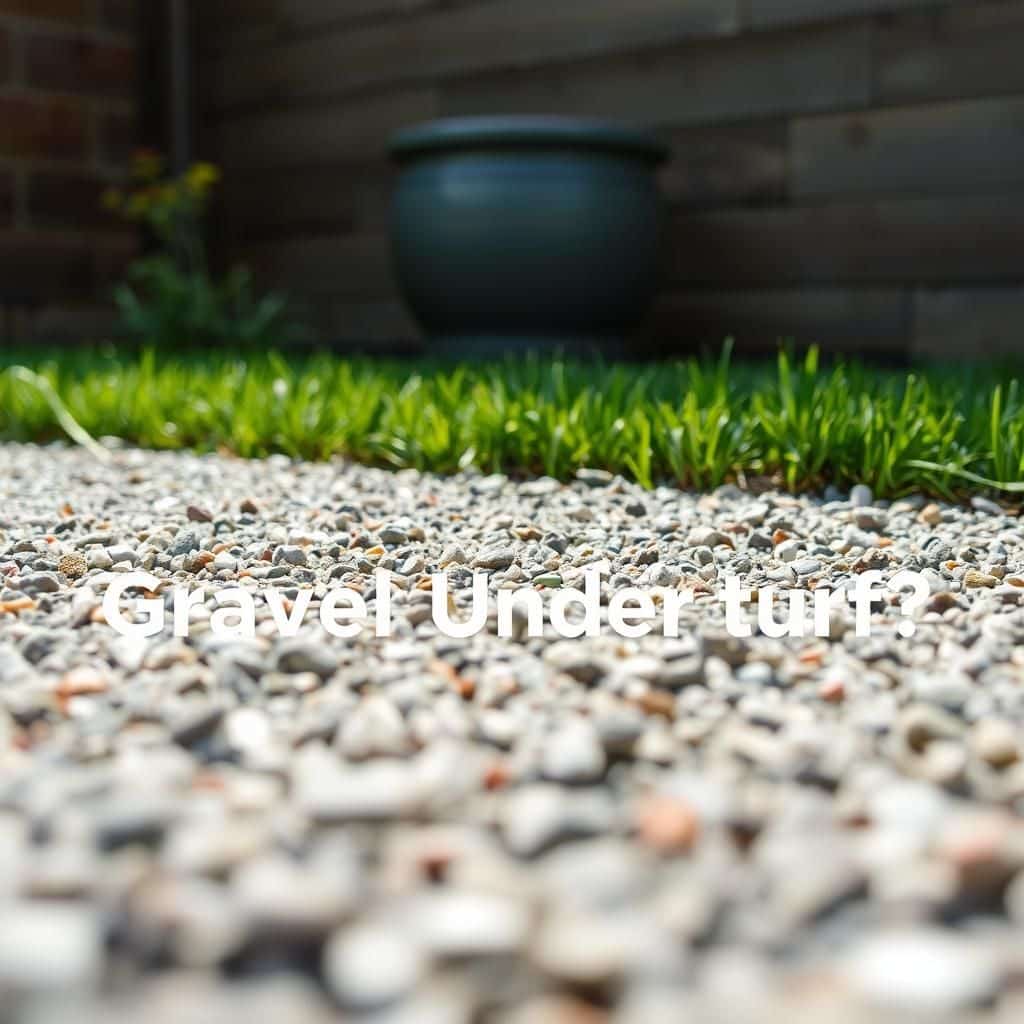
When installing artificial turf, many homeowners wonder about the necessity of laying gravel underneath. This article delves into the advantages of using gravel as a base for turf, exploring its role in drainage, stability, and overall longevity of the installation. We will also examine best practices for gravel selection and installation techniques to ensure optimal performance of your turf. Whether you're aiming for a lush backyard or a low-maintenance lawn, understanding the benefits of gravel can significantly impact the success of your artificial turf project. Let's explore why this seemingly simple step can make a big difference.
Should I Put Gravel Under Turf?
Placing gravel under turf can provide several benefits that enhance both the installation process and long-term performance of artificial grass. Gravel serves as a drainage layer, allowing excess water to flow away from the surface, which can help prevent mold and mildew development. Additionally, it can provide a stable base that prevents shifting and settling of the turf over time. However, it’s essential to ensure that the gravel is compacted properly and that the right type of gravel is used, as poorly chosen materials may impede drainage or even cause damage to the turf.
Benefits of Using Gravel Under Turf
Using gravel under turf can improve drainage, reduce moisture retention, and create a supportive base for the turf’s structure. This results in enhanced performance and durability, particularly in areas that experience heavy rainfall or high foot traffic. Furthermore, gravel assists in preventing the growth of weeds and contributes to a more stable surface that can endure various weather conditions while ensuring the turf remains intact.
Types of Gravel Suitable for Turf
Selecting the right kind of gravel is crucial for optimal performance underneath turf. Generally, crushed stone or small pea gravel is recommended as they provide good drainage and compact well. It is advisable to avoid large rocks or gravel types that do not allow water to flow through effectively, as this can lead to water pooling and potential damage to the turf. Properly sized gravel allows for aeration while offering adequate support.
Installation Guidelines for Gravel Under Turf
When installing gravel under turf, ensure to start with a proper excavation, removing any existing vegetation and debris. Create a layer of gravel around 2 to 4 inches deep, depending on the drainage needs of your area. It is essential to spread the gravel uniformly and use a compactor to create a solid and even base. After the gravel layer is set, ensure to test for adequate drainage before laying the turf to avoid future complications.
Potential Issues with Gravel Under Turf
While gravel can enhance drainage and stability, there are potential issues that might arise if not installed correctly or if wrong materials are used. Improper layering or selection can result in poor drainage, leading to water pooling and subsequent turf damage. Additionally, if the gravel layer is not compacted adequately, it can shift over time, causing the turf to buckle or become uneven, which detracts from its aesthetic appeal and usability.
Maintenance Considerations for Gravel Under Turf
Maintaining the area with gravel under turf requires periodic inspections to ensure the drainage remains unobstructed. Over time, dirt, debris, or organic material can accumulate in gravel, potentially hindering drainage. It's also important to check for any shifting of the gravel which may necessitate addition or compaction. Regularly monitor the surface for any signs of wear and ensure that the turf is secure and properly installed on the gravel base for optimal longevity.
| Aspect | Considerations |
|---|---|
| Type of Gravel | Crushed stone or pea gravel recommended |
| Depth | 2 to 4 inches based on drainage needs |
| Compaction | Essential for stability and drainage |
| Maintenance | Periodic inspection and debris removal required |
| Potential Issues | Poor drainage leading to turf damage |
Do you need gravel under turf?

Installing artificial turf can significantly enhance the beauty and functionality of your outdoor spaces, but understanding whether you need gravel beneath it is essential for ensuring a durable and efficient installation. Although it is not always required, incorporating gravel can provide several advantages.
Gravel serves as a base layer for turf, offering enhanced drainage, stability, and support. When water accumulates on top of the turf, it can lead to issues such as mold or uneven surfaces. Therefore, having gravel underneath can help manage excess moisture efficiently. Additionally, the gravel layer can prevent weeds from growing, further maintaining the turf's appearance.
While some installations may omit gravel, especially on solid, well-draining ground, adding it is often recommended for optimal performance. Gravel can also facilitate easier maintenance, should it be required in the future, as it allows for quicker access to the soil beneath for repairs or adjustments.
Benefits of Gravel Under Turf
Gravel can provide significant benefits when installed beneath turf. Some key advantages include:
- Excellent Drainage: Gravel allows water to drain away quickly, preventing pooling on the surface.
- Weed Control: A layer of gravel can help eliminate potential weed growth, maintaining the aesthetic of your turf.
- Stability: Gravel provides a solid foundation, preventing shifts and settling of the turf over time.
Types of Gravel Suitable for Turf Installation
Not all gravel types are appropriate for installation under turf. The types of gravel that work best include:
See also:
- Class 2 Road Base: A mixture of crushed stones that compacts well, providing a stable base.
- Pea Gravel: Smooth, rounded stones that allow for efficient drainage while remaining lightweight.
- Crushed Stone: Angular stones that interlock well and offer substantial support beneath the turf.
Installation Process of Gravel Under Turf
The process of laying gravel under turf is crucial for ensuring a successful installation. Steps involved include:
- Site Preparation: Clear the area of debris, vegetation, or existing sod before beginning the gravel layer.
- Gravel Layering: Spread an even layer of gravel throughout the installation area, compacting it as you go.
- Turf Installation: Lay the turf over the gravel, ensuring it fits snugly and maintains a seamless appearance.
Potential Issues Without Gravel
Not using gravel can lead to several potential issues that can compromise the longevity of your turf. These include:
- Poor Drainage: Without gravel, water can accumulate, creating muddy areas and promoting algae growth.
- Uneven Surfaces: The lack of a stable base may cause the turf to shift, resulting in uneven patches.
- Weed Growth: Without a gravel barrier, weeds are more likely to penetrate the turf surface, requiring constant maintenance.
Maintenance of Turf Over Gravel
Maintaining turf installed on gravel requires specific practices to keep it looking its best. Recommended maintenance steps include:
- Regular Cleaning: Remove debris and leaves from the surface to promote drainage and minimize odors.
- Inspect for Damage: Periodically check for any tears or signs of settling, ensuring timely repairs.
- Weed Control: Employ a weed barrier or manually remove any weeds that may emerge from underneath.
What is the best base to put under artificial turf?
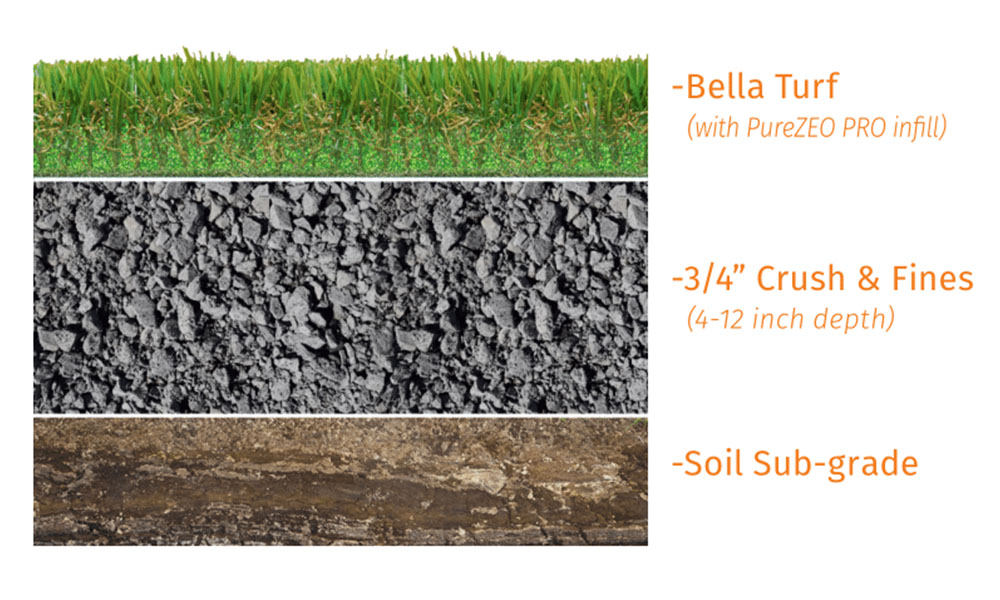
To ensure the longevity and functionality of artificial turf, selecting the most suitable base is crucial. The best base under artificial turf typically consists of a layered system that provides drainage, stability, and support. Generally, a combination of crushed stone, gravel, and sand is recommended to create an effective foundation. The following components can be considered for constructing a strong base:
Understanding the Purpose of the Base
The base serves as the foundation for the artificial turf, providing necessary support and stability. It prevents the turf from shifting or moving and allows for proper drainage, which is essential to avoid water pooling on the surface. An effective base enhances the playing experience by maintaining firmness and resilience. Key functions include:
- Drainage: Ensures water does not accumulate on the turf.
- Support: Provides a stable foundation for the turf, preventing warping or shifting.
- Protection: Aids in cushioning impacts, making it safer for users.
Choosing the Right Materials
Selecting the right materials is vital for building a robust base. Crushed stone and gravel are commonly used due to their excellent drainage properties, while sand can be added to promote stability. Each material has its own benefits:
- Crushed Stone: Provides superior drainage and is highly durable.
- Gravel: Offers a solid foundation and helps with water runoff.
- Sand: Enhances stability and adds cushioning for a comfortable feel.
Layering System for Enhanced Performance
A well-structured layering system is essential for achieving optimal performance. A typical base layer consists of three main components:
- Base Layer: Generally made of larger crushed stones to facilitate drainage and support heavy traffic.
- Leveling Layer: A fine gravel or sand layer to create a smooth, even surface for the turf installation.
- Top Layer: Fine sand spread across the surface of the base to enhance the turf's stability.
Importance of Compaction
Proper compaction of the base layers cannot be overlooked as it plays a crucial role in the durability of the artificial turf installation. Compaction helps in:
- Stability: Ensures that the surfaces are solid and reduces the likelihood of settling over time.
- Drainage Efficiency: A compacted base aids better water flow through the layers.
- Longevity: Properly compacted bases minimize wear and tear on the turf surface.
Drainage Considerations
Effective drainage is imperative to prevent water accumulation, which can damage the turf over time. When constructing the base, consider these drainage aspects:
- Sloping: Design the base with a slight slope to encourage water runoff.
- Perforated Pipes: Install drainage pipes if necessary, especially in areas with heavy rainfall.
- Geotextiles: Use fabrics that separate different layers while allowing water to flow, preventing clogging.
What is the best material to lay under turf?

The best material to lay under turf is a combination of sand, soil, and compost to create an ideal base. This layered approach encourages proper drainage, provides a stable foundation, and promotes healthy turf growth. The materials used directly influence the performance of the turf, so it’s essential to choose wisely.
Importance of Drainage in Turf Installation
Proper drainage is crucial for maintaining healthy turf. When laying turf, excess water can lead to root rot and other issues. The chosen materials must facilitate quick drainage to prevent waterlogging. A well-drained base reduces the risk of fungal diseases and helps the roots develop effectively.
See also: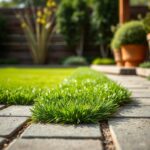
- Drainage layers prevent water accumulation.
- Reduces the chances of turf diseases.
- Encourages stronger root growth.
Choosing the Right Soil Mix
The right mix of soil is vital for turf growth. A mixture that combines topsoil and sand is recommended. Topsoil provides essential nutrients while sand improves drainage and aeration. Ensure the soil is free from weeds, debris, and contaminants for the best results.
- Topsoil supplies necessary nutrients.
- Sand enhances drainage capabilities.
- Avoid weeds to prevent competition for nutrients.
Using Compost for Nutrient Management
Adding compost to the soil mix enriches the base and promotes healthier turf by supplying a balanced source of nutrients. It helps retain moisture while improving soil structure. Compost also enhances microbial activity, which is beneficial for root systems.
- Compost enriches the soil with nutrients.
- Improves moisture retention capabilities.
- Boosts beneficial microbial activity in the soil.
Installation Process of Turf Base Layer
The installation process for a turf base involves several steps. Start by clearing the area and ensuring a level surface. Next, lay the chosen materials in layers, compacting them appropriately. This systematic approach ensures that the turf will have the support it needs to thrive.
- Clear the area of debris and rock.
- Layer materials evenly to create a solid base.
- Compact the layers firmly for stability.
Maintenance of Turf Base Materials
Once the turf is installed, it's important to maintain the base materials. This involves regular aeration, mowing, and ensuring that drainage remains effective. Periodic checks should be conducted to prevent any compaction or over-saturation that could negatively impact the turf.
- Aerate to prevent compaction.
- Mow regularly to encourage healthy growth.
- Check drainage to maintain effectiveness.
Can I lay turf on top of gravel?
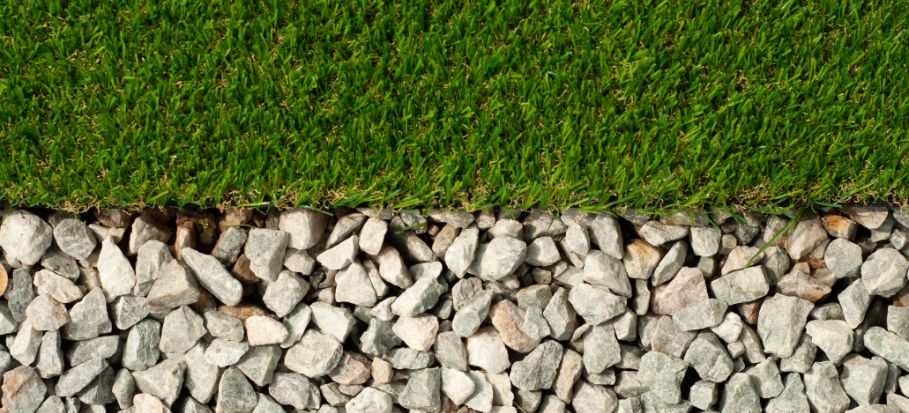
Laying turf on top of gravel is not generally recommended due to the inherent properties of both materials. Gravel creates a well-drained surface, which can be beneficial for drainage but does not provide a solid foundation for turf to thrive. Grass roots require soil, moisture, and nutrients to grow, and laying turf directly on gravel can hinder these essentials.
Understanding Gravel's Drainage Properties
Gravel is primarily used for drainage purposes, allowing water to flow freely and preventing soil erosion. It promotes the percolation of water, which is essential for maintaining dry surfaces in certain landscapes. However, this property can also be a drawback when laying turf because:
- Insufficient Moisture: The turf may not retain enough moisture needed for healthy growth.
- Root Development Issues: Grass roots may struggle to penetrate through gravel, leading to weak growth.
- Temperature Fluctuations: Gravel can retain heat during warm weather, which may cause stress to the turf.
Preparing the Ground for Turf Laying
Preparation is key when laying turf successfully. Instead of using gravel, it is advisable to prepare a more suitable surface. The following steps will help in preparing a better foundation:
- Remove Gravel: Excavate the gravel layer to expose the soil underneath.
- Add Topsoil: Lay a layer of quality topsoil which provides nutrients for the grass.
- Compact and Level: Ensure the soil is compacted and level to prevent water pooling.
Choosing the Right Turf
When laying turf, it is essential to choose the right type to ensure compatibility with your local climate and soil conditions. Consider the following factors when selecting turf:
- Local Climate: Different grass types thrive in different climatic conditions.
- Turf Variety: Some grasses are better suited for sandy or clay soils rather than rocky or gravelly areas.
- Sunlight Requirement: Choose a variety suitable for the amount of sunlight in your area.
Maintenance After Laying Turf
Once you have successfully laid your turf, proper maintenance is crucial for its establishment and growth. Follow these maintenance tips to ensure a thriving lawn:
- Regular Watering: Water the turf adequately, especially in the initial weeks until it roots.
- Fertilization: Apply a starter fertilizer to provide necessary nutrients.
- Mowing: Begin mowing once the grass reaches the appropriate height to promote healthy growth.
Potential Alternatives to Gravel
If you are considering laying turf but currently have gravel down, there are alternatives you can consider that might be more beneficial. Some options include:
- Soil Amendments: Improve the current soil structure by adding organic matter.
- Mulch Layers: Consider using mulch instead of gravel, which can retain moisture better.
- Landscaping Fabric: Use landscaping fabric beneath the turf to prevent weed growth while allowing for better moisture retention.
Questions from Our Readers
Should I put gravel under turf?
Yes, it is recommended to put gravel under turf as it provides a solid drainage layer, preventing water accumulation and promoting healthy root growth. Gravel allows excess moisture to escape, reducing the risk of mold and keeping the turf lush and green.
What type of gravel is best for under turf?
The best type of gravel for under turf is crushed stone or pea gravel, as these materials facilitate excellent drainage and stability. Crushed stone has angular edges that lock together, providing a sturdy base that helps maintain the turf’s structure.
See also: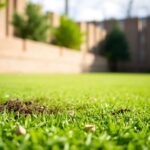
How thick should the gravel layer be under turf?
A gravel layer of about 2 to 4 inches is typically recommended under turf. This thickness ensures proper drainage while also providing enough support for the turf, promoting overall health and longevity.
Will gravel affect the growth of turf?
While gravel serves as a beneficial drainage layer, improper use or excessive layers can hinder growth by restricting access to nutrients and water. It is crucial to ensure that the turf is installed correctly on top of the gravel to promote optimal growth conditions.
https://youtube.com/watch?v=sHHaEYttn5s
If you want to read more articles like Should I Put Gravel Under Turf? Exploring the Benefits and Best Practices, we recommend you check out our Turf category.
Leave a Reply
Related Articles